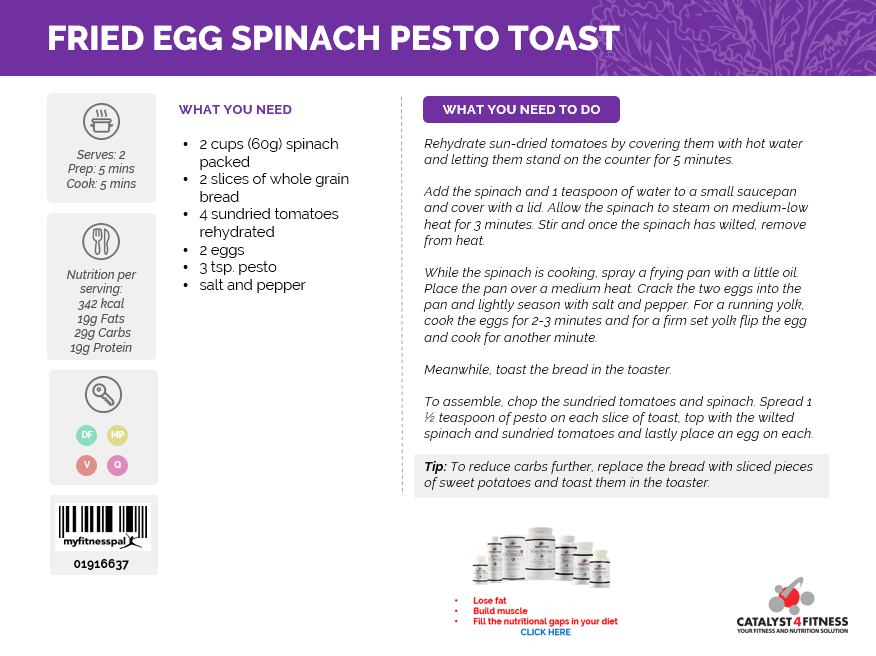Healthy Recipe Substitutions
Personal training and nutrition coaching often become pivotal points in my clients’ lives. Good nutrition is an integral component of a healthy lifestyle and helping my clients make smart eating choices is part of my role. Healthy recipe substitutions are easy ways to make positive changes and show them that eating healthy doesn’t have to mean they are subjected to eating the same food over and over, or food that doesn’t taste good.
Many people mistakenly believe they must follow a traditional bodybuilder’s nutrition plan – chicken, lean beef, complex carbohydrates including sweet potatoes and brown rice, non-starchy vegetables such as broccoli and spinach, limited fruit and small amounts of fats. When in reality, adhering to a healthier diet can be made easier by modifying recipes already enjoyed.
At first, the trial and error of ingredient substitutions may produce a few dishes that don’t taste too good or have a texture that frankly isn’t appealing. When new to experimenting with recipes, make only one change at a time so you can decide if it is a “keeper.” Also, write down the ingredients and the amount used so the “success” can be easily recreated and “failures” not repeated.
Based on my knowledge of a client’s personality and their openness to change, I may caution my client not to go overboard and buy all suggested new foods without slowly trying them one or two at a time. Initially throwing away all of the “bad” foods isn’t the answer either because if substitutes aren’t appealing, the alternative may be driving to the nearest fast food drive thru and binging. Habits take time to create and jumping in with both feet isn’t always the best.
For an easy way to establish good habits, Online Nutrition Coaching gives you more than 7000 recipes to choose from, automatically generated grocery lists, and tracks your calories and macronutrients.
Listed below are some simple healthy recipe substitutions:
Cooking
- Grill, roast, or bake meat and fish instead of frying
- Cook in nonstick pans instead of using oil
- To add flavor, use herbs and spices instead of butter or salt. Lemon juice is another option
- Use low fat dairy products – cheese, yogurt, milk, sour cream. Examples are Neufchatel cheese instead of cream cheese, low fat yogurt or nonfat yogurt or even a combination of them, skim milk, and lite sour cream
- Use lite mayonnaise and only sparingly
- Serve brown rice and whole wheat pasta in place of white counterparts
- Grate low fat cheese instead of using cubes. You can achieve the same flavor with less
- Replace eggs with egg beaters or egg whites
- Use whole wheat flour, oats, or oat flour instead of white flour
- Substitute evaporated milk for heavy cream
- Replace ground beef with ground turkey
- When eating salads, serve the dressing on the side and dip the fork into it instead of pouring the dressing on
Baking
- Use natural applesauce in place of oil or butter in a one-to-one ratio
- Substitute all or a portion of chocolate with dark chocolate cocoa
- Reduce the amount of dried fruit or replace with chopped almonds or walnuts
- Use a sugar substitute. There are many to choose from and clients should find one that they are comfortable with. I prefer Stevia or light agave syrup. For Stevia, 2 tablespoons is the equivalent of 1 cup of sugar. If they try the agave syrup, ¾ cup is the same as 1 cup of sugar. Also lower the oven temperature by 25°F and reduce other liquids by about 1/3. This really isn’t difficult when the desired consistency of what is being baked.is known; whether it’s cookies, cake, or bread
- Substitute whole milk for heavy cream
- Add a teaspoon of vanilla, almond, or another extract for extra flavor. There are also flavored sugar free syrups, such as maple, banana, chocolate, and peanut butter which can be used
- Replace eggs with egg whites
- Use low fat dairy products – cheese, yogurt, milk, sour cream
- Use whole wheat flour, oats, or oat flour instead of white flour
- Replace sweetened condensed milk with nonfat sweetened condensed milk
- Replace evaporated milk with evaporated skim milk
- Substitute natural peanut butter for processed peanut butter or peanut spread
If my client is resistant to some of these changes, I encourage them to take small steps but do so consistently. For instance, if they insist that they must use sugar when baking, the amount can usually be decreased by about 25% without changing the taste or texture. And similarly, if butter or oil is a necessity, the amount can be lessened by about 50% without changing the taste.
Just like with my client’s fitness program, setting goals and providing accountability are two keys to success. I’ll ask them to commit to including a recipe substitution in at least one favorite recipe in the coming week. And I’ll follow up to learn what they made and if it’s a “keeper” or it needs a little more finesse.


